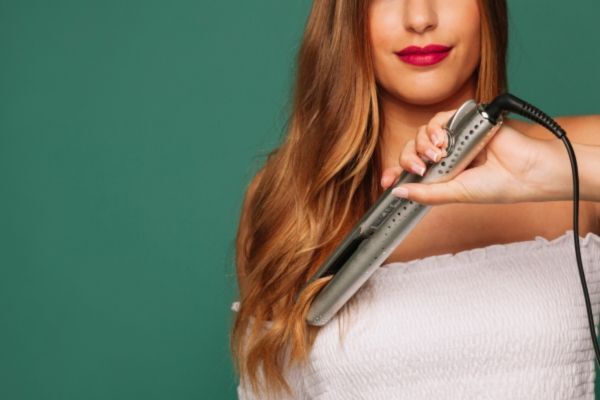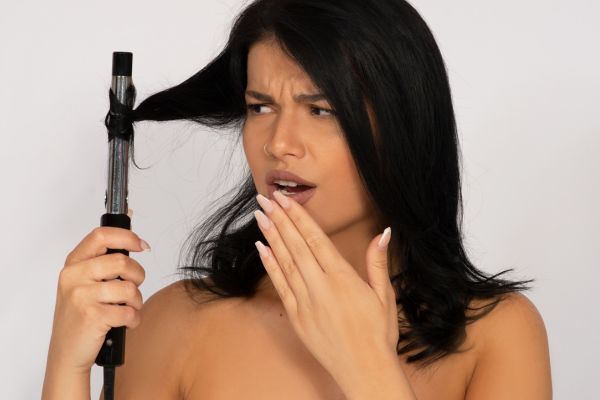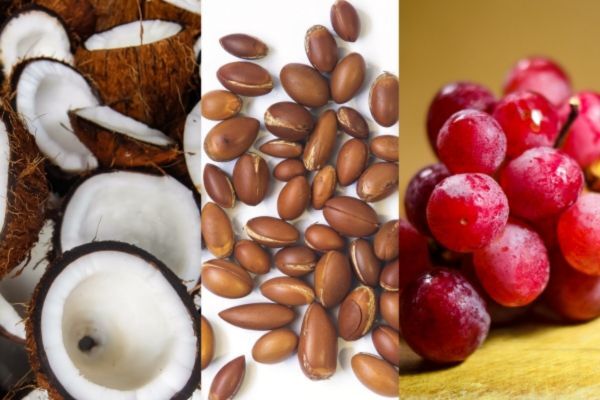How to Use Heat Protectants to Prevent Hair Damage
Apr 26, 2025 | By Maria Eliza Pineda

Nowadays, using heat styling tools like blow dryers, curling irons, and flat irons is part of many people’s daily routine. Whether you're getting ready for work or a special event, heat is often involved in achieving your desired look. But did you know that frequent use of heat can cause damage like split ends, frizz, and dryness?
It’s important to remember that while heat tools help create stylish looks, they can damage your hair’s natural texture and health if used incorrectly. But don’t worry—this doesn’t mean you have to give up your styling routine. There’s a way to keep your hair healthy even when exposed to heat, and one of the most effective solutions is using a heat protectant for hair.
What is a Heat Protectant and How Does It Work?
A heat protectant is a product applied to hair before using heat styling tools. It creates a protective barrier over the hair cuticle to prevent moisture loss, frizz, and breakage. It's a crucial step that many beginners forget when styling with heat.
Aside from protection, heat protectants help make hair more manageable and prevent over-drying. Most products contain silicone-based compounds, oils, and proteins that coat the hair, preventing direct contact with high temperatures. In short, it's your hair’s “invisible armor” every time it’s exposed to heat.
Benefits of Using a Heat Protectant

Moisture Retention
One major benefit of heat protectants is helping your hair retain moisture. Without protection, natural oils and water quickly evaporate, leaving strands dry and brittle. A good heat protectant forms a moisture barrier to prevent dehydration.
Split Ends and Breakage Reduction
Frequent heat styling makes hair prone to split ends and breakage. Heat protectants help strengthen hair strands and reduce the stress caused by thermal tools. This helps preserve your hair’s overall strength and beauty, even with regular styling.
Frizz Control and Shine
Heat is one of the biggest culprits behind frizz. With the right heat protectant, you can control frizz and make your hair look smoother and shinier. Many products also contain ingredients that enhance your hair’s natural glow.
Color Protection
If you have color-treated hair, heat can cause fading much faster. Heat protectants help seal the hair cuticle, locking in color and keeping it vibrant for longer. That means less frequent touch-ups and longer-lasting hair color.
Different Types of Heat Protectants
Heat Protectant Spray
Sprays are the most popular and easiest to use. They’re ideal for normal to oily hair types since they’re lightweight and dry quickly—perfect for those rushing in the morning.
Hair Serums
Serums are more concentrated and better suited for dry or damaged hair. They often include nourishing and shine-enhancing ingredients. A small amount goes a long way.
Creams and Lotions
Thicker than sprays or serums, these are great for coarse or thick hair. They provide both heat protection and hydration. If you want an all-in-one product, this is a good option.
Natural Heat Protectant
For those who love clean beauty, there are heat protectants made with coconut oil, argan oil, and shea butter. These ingredients offer not just protection but nourishment too. Many options today are cruelty-free and eco-friendly.
How to Use Heat Protectants Properly
Step-by-Step Guide:
1. Wash and Towel-Dry Your Hair
After showering, gently towel-dry your hair to remove excess water. Never use heat tools on wet hair as it can cause serious damage. Hair should be damp, not dripping wet.
2. Apply the Heat Protectant
Spray or distribute the product from the mid-lengths to the ends of your hair. Avoid the scalp to prevent a greasy look. Make sure the product is evenly applied so your hair is fully protected.
3. Comb Through
Use a wide-tooth comb to spread the product evenly. This also helps prevent tangling before styling. Detangled hair reduces breakage during styling.
4. Begin Heat Styling
Use tools with adjustable heat settings and match the temperature to your hair type. You don’t always need the highest heat setting—medium heat often works just fine. Always choose tools with heat control features for safer styling.
Common Heat Styling Mistakes

Using a Flat Iron on Wet Hair
This is one of the most damaging mistakes. Styling wet hair with heat causes a boiling effect inside the strands. This is extremely harmful. It can literally “cook” your hair.
Applying Too Much Product
Some believe more product equals better protection. But overapplying can make your hair greasy and heavy. Always follow the recommended amount for your hair length and thickness.
Using the Highest Temperature Setting All the Time
High heat doesn’t mean better results—it only speeds up hair damage. Choose a temperature that’s just enough to style your hair effectively. Always err on the side of lower heat when possible.
Skipping Heat Protectant Altogether
This is the most dangerous oversight. Even the best tools can’t protect your hair without a proper heat protectant. Apply it every single time before styling.
Tips to Prevent Heat Damage
Limit Heat Styling to 2–3 Times a Week
The more often you use heat, the higher the risk of damage. Give your hair a break by skipping heat some days. This helps preserve long-term hair health.
Use Styling Tools with Temperature Control
Every hair type is different, so using tools with adjustable heat settings is crucial. Look for ones with digital controls or multiple presets. This is the key to heat styling safety.
Deep Condition Once a Week
Deep conditioning treatments help restore moisture and nutrients. They’re essential in any hair damage prevention routine. Choose the formula that suits your hair type for best results.
Try No-Heat Hairstyles
No-heat styles like braids, buns, and twists are not only hair-friendly but also super fun and creative. Try experimenting with different looks without heat. You might even find new go-to styles!
Trim Regularly
Trimming helps remove split ends before they spread. A small trim every 6–8 weeks keeps hair looking fresh and healthy. It also reduces breakage over time.
Natural and Sustainable Heat Protectant Options

Coconut Oil
Affordable and natural, coconut oil is great for sealing in moisture. It offers light heat protection, perfect for gentle styling. Bonus: it smells amazing!
Grapeseed Oil
With a high smoke point, grapeseed oil is ideal for higher heat styling. It’s lightweight and non-greasy. A top choice among health-conscious users.
Argan Oil
Packed with vitamin E and fatty acids, argan oil adds shine while protecting hair. It’s especially helpful for dry or color-treated hair. Plus, it helps control frizz!
Frequently Asked Questions
What does a heat protectant do for your hair?
It creates a barrier to protect hair from heat damage. It helps retain moisture and reduces breakage. It’s a must-have step in any heat styling routine.
Can you apply heat protectant on dry hair?
Yes, though it’s more effective on damp hair. This ensures better absorption and a smoother finish. Just don’t overapply.
How often should you use heat protectant?
Every time you use thermal styling tools. No exceptions. Consistency is key.
Do heat protectants really work?
Absolutely, as long as the product is right for your hair and applied correctly. Countless studies and personal experiences prove their effectiveness. Use them regularly for best results.
What is the best natural heat protectant for hair?
It depends on your hair type, but coconut oil, argan oil, and grapeseed oil are top options. They offer protective and nourishing benefits. Choose what fits your lifestyle and hair needs best.
Style Without Sacrifice
You don’t have to avoid blow-drying or flat ironing to keep your hair healthy. What matters most is using the right heat protectant for hair and following heat styling safety tips. With consistent use, you can enjoy salon-styled looks without compromising your hair’s health. Protect your hair from heat because healthy hair is always in style.




